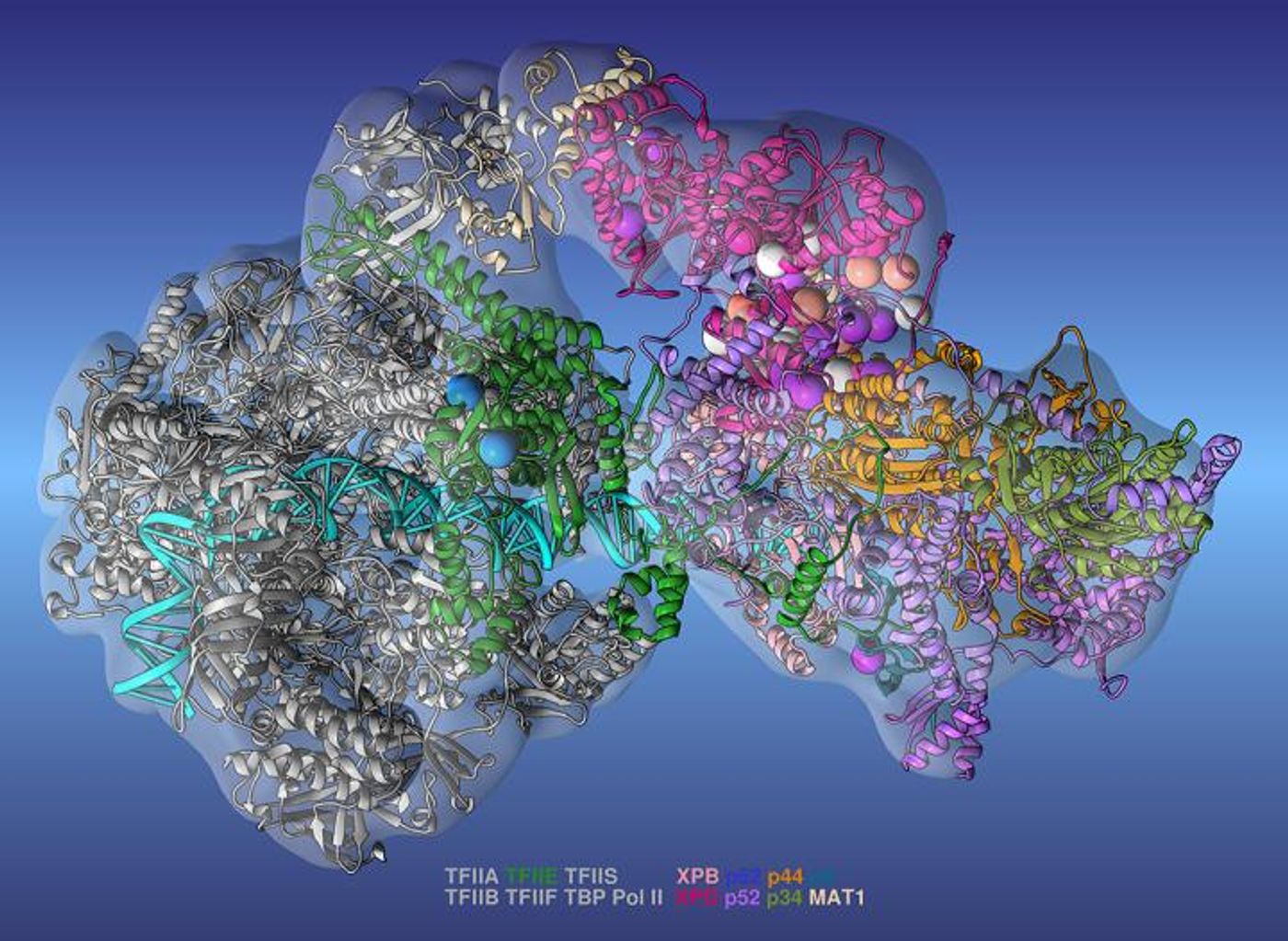Structural Biology Research Shows how Transcription Errors can Lead to Disease
An error in a gene, a mutation, can cause a disease, but the relationship between the genome of an organism and its physical characteristics, and exactly how genetic mutations lead to illness can be challenging to understand. To learn more about how gene sequences influence physiology, scientists used a powerful supercomputer to analyze important cellular machinery called the transcription preinitiation complex (PIC), which helps the cell make proteins from genes. The work, which utilized the 200-petaflop IBM AC922 Summit system, was led by Ivaylo Ivanov of Georgia State University and was reported in Nature Structural & Molecular Biology.
"Like a broken gear in a machine, mutational changes break down the function of the defective protein, a process that involves alterations in both structure and dynamics," Ivanov said. "This confluence of factors presents a challenge for conventional structural biology methods."
Enzymes called RNA polymerases act to transcribe RNA from the genetic template. The PIC involves the RNA polymerase called Pol II, which moves into position along with a host of transcription factors so it can initiate the transcription process. The DNA helix also has to be unwound, which requires other proteins. Transcription is a carefully orchestrated process, and one transcription factor, TFIIH, helps regulate the expression of gene expression.
While some genetic mutations directly impact the function of a gene, other mutations may affect one of the many proteins that are involved in the transcription process, indirectly impacting the function of many proteins and causing disease.
This work can help reveal the adverse impacts of dysfunction in the PIC machinery. Previous work in this area has been limited because models of the machinery were incomplete. This study utilized cryo-electron microscopy, which provided more detailed information.
Transcription is illustrated in the video.
"The new model gives us the most complete view of the structure of TFIIH, which helps us understand the dynamics of these proteins and lets us map the origins of patient-derived mutations, potentially enabling future biochemical experiments focused on understanding the structural mechanisms of TFIIH," Ivanov said.
The research showed how the PIC was organized and determined how various components of the complex act on DNA. The scientists used genetic information on 36 different human mutations (found in patients) and learned that some of them were clustering in a critical subunit of TFIIH. Called XPD, the subunit causes transcription factors to work improperly and can lead to disease. The researchers thus learned more about three very different genetic disorders.
"Computation is absolutely instrumental in providing a link between the structure, which comes from CryoEM data, and the disease phenotype, which is a high-level concept difficult to explain with answers purely based on traditional biochemistry and structural biology," Ivanov said.
"If you have a handle on which regions of a protein are affected, then you can potentially develop therapies for genetic diseases, but without a fundamental understanding of the underlying mechanism, all bets are off," he added. "We look forward to moving beyond merely describing the mechanisms of transcription to elucidate their connection to genetic diseases."
Sources: AAAS/Eurekalert! via DOE/Oak Ridge National Laboratory, Nature Structural & Molecular Biology









